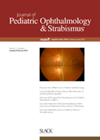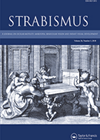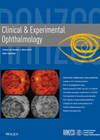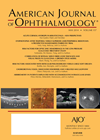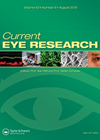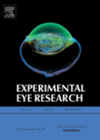
Journal Reviews archive for October 2014
LR/SR surgery for high myopia strabismus
The authors evaluated the outcomes of a surgical procedure involving the muscle union of the superior rectus and lateral rectus muscles with and without medial rectus recession and the anatomic changes before and after surgery in 35 eyes of 20...
Congenital aniridia clinical features
In this study the authors investigated the various ocular and systemic features associated with congenital aniridia in Indian eyes (262 eyes of 131 patients). The median age at time of first hospital visit was eight years (one day to 73...
Binocular training for amblyopia
The clinical effectiveness of binocular investigation for amblyopia was measured. The authors had previously unsuccessfully treated patients using occlusion and / or surgery. Patients were followed for an average of six months after cessation of treatment. The study included 22...
Brown’s syndrome surgery
Complications of surgery for Brown syndrome include under correction, extrusion of expanders and training for surgery. The authors introduced a procedure with minimal side-effects, accompanied by the application of the native tendon for superior oblique elongation. This was a prospective...
IOOA and DVD surgery
The authors report the results of bilateral modified inferior oblique (IO) transposition considering the equator in seven patients with infantile strabismus syndrome with inferior oblique overaction (IOOA) and dissociated vertical deviation (DVD). Mean age was 4.5 years (2-7) and mean...
Measuring IPD with PlusoptiX
The authors evaluated the accuracy of the PlusoptiX A04 for measuring pupillary distance as compared to measurements taken by a trained optician. This retrospective review included 256 children who had undilated PA04 screening and had pupil distance measurement done by...
Conversion to strabismus and amblyopia
This study was undertaken to evaluate the incidence of true manifest strabismus, the visual acuity at school screening and whether risk of failing screening is different in those discharged at first visit or followed up. The author reviewed 248 children...
Review of IDeX surgical outcome measures
The authors aimed to evaluate whether or not there exists standardisation of outcome measures amongst studies in the literature reporting results of surgery for intermittent exotropia. A 10 year literature review was conducted from 2002-2012 with extraction of English language...
Uveitis in HIV infected persons
Before the advent of highly active antiretroviral therapy (HAART), uveitis, in particular cytomegalovirus (CMV) retinitis, was the most common cause of visual loss in patients with AIDS. HAART has altered the cause of ocular disease in HIV infected individuals by...
Ranibizumab versus laser in diabetic macular oedema (LUCIDATE study)
The aim of this study was to compare the functional and structural effects of Ranibizumab versus macular laser treatment in patients with diabetic macular oedema. It was a single centre, prospective, randomised, single masked clinical trial spanning a 48 week...
The choroid in pregnancy
During pregnancy there can be different types of ocular changes including a decrease in corneal sensitivity, increase in central corneal thickness and curvature, decrease in intraocular pressure, central serous chorioretinopathy and ocular blood flow. Advances in ophthalmic imaging devices has...
MicroRNA mediate retinoblastoma signal transduction
MicroRNAs (miR) are small non-coding single-stranded RNA molecules, normally 22 nucleotides long. There is a large family of miR that control protein expression by binding to mRNAs, leading to their degradation. One important role of miR is in tumours where...

